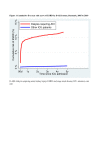Five-year risk of end-stage renal disease among intensive care patients surviving dialysis-requiring acute kidney injury: a nationwide cohort study
- PMID: 23876346
- PMCID: PMC4055988
- DOI: 10.1186/cc12824
Five-year risk of end-stage renal disease among intensive care patients surviving dialysis-requiring acute kidney injury: a nationwide cohort study
Abstract
Introduction: Dialysis-requiring acute kidney injury (D-AKI) is common among intensive care unit (ICU) patients. However, follow-up data on the risk of end-stage renal disease (ESRD) among these patients remain sparse. We assessed the short-term and long-term risk of ESRD after D-AKI, compared it with the risk in other ICU patients, and examined the risk within subgroups of ICU patients.
Methods: We used population-based medical registries to identify all adult patients admitted to an ICU in Denmark from 2005 through 2010, who survived for 90 days after ICU admission. D-AKI was defined as needing acute dialysis at or after ICU admission. Subsequent ESRD was defined as a need for chronic dialysis for more than 90 days or a kidney transplant. We computed the cumulative ESRD risk for patients with D-AKI and for other ICU patients, taking into account death as a competing risk, and computed hazard ratios (HRs) using a Cox model adjusted for potential confounders.
Results: We identified 107,937 patients who survived for 90 days after ICU admission. Of these, 3,062 (2.8%) had an episode of D-AKI following ICU admission. The subsequent risk of ESRD up to 180 days after ICU admission was 8.5% for patients with D-AKI, compared with 0.1% for other ICU patients. This corresponds to an adjusted HR of 105.6 (95% confidence interval (CI): 78.1 to 142.9). Among patients who survived 180 days after ICU admission without developing ESRD (n = 103,996), the 181-day to 5-year ESRD risk was 3.8% for patients with D-AKI, compared with 0.3% for other ICU patients, corresponding to an adjusted HR of 6.2 (95% CI: 4.7 to 8.1). During the latter period, the impact of AKI was most pronounced in the youngest patients, aged 15 to 49 years (adjusted HR = 12.8, 95% CI: 6.5 to 25.4) and among patients without preexisting chronic kidney disease (adjusted HR = 11.9, 95% CI: 8.5 to 16.8).
Conclusion: D-AKI is an important risk factor for ESRD for up to five years after ICU admission.
Figures
Comment in
-
Renal function after elective total hip replacement.Acta Orthop. 2016 Jun;87(3):235-8. doi: 10.3109/17453674.2016.1155130. Epub 2016 Mar 3. Acta Orthop. 2016. PMID: 26937782 Free PMC article.
References
-
- Uchino S, Kellum JA, Bellomo R, Doig GS, Morimatsu H, Morgera S, Schetz M, Tan I, Bouman C, Macedo E, Gibney N, Tolwani A, Ronco C. Beginning and Ending Supportive Therapy for the Kidney (BEST Kidney) Investigators. Acute renal failure in critically ill patients: a multinational, multicenter study. JAMA. 2005;17:813–818. doi: 10.1001/jama.294.7.813. - DOI - PubMed
-
- Bagshaw SM, Laupland KB, Doig CJ, Mortis G, Fick GH, Mucenski M, Godinez-Luna T, Svenson LW, Rosenal T. Prognosis for long-term survival and renal recovery in critically ill patients with severe acute renal failure: a population-based study. Crit Care. 2005;17:R700–R709. doi: 10.1186/cc3879. - DOI - PMC - PubMed
Publication types
MeSH terms
LinkOut - more resources
Full Text Sources
Other Literature Sources
Medical


